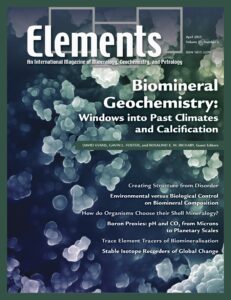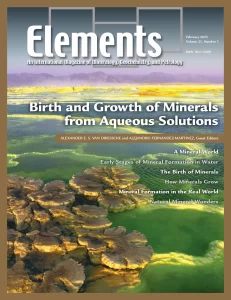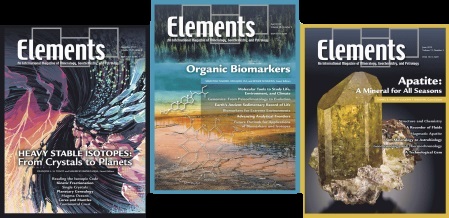v21n2 From The Editor
By Janne Blichert-Toft, Sumit Chakraborty, Tom Sisson, Carol Frost, and Esther Posner | April, 2025

Marine calcium carbonate biominerals, especially the shells and skeletons produced by molluscs, corals, and the immeasurably numerous calcifying phytoplankton and zooplankton, are of both societal and environ mental importance for two key reasons. Firstly, the mineralised remains of these organisms are one of the largest longterm sinks of carbon on Earth’s surface. Secondly, and perhaps more practically, the (trace) element and isotopic composition of these biominerals probably represents the most widely applied tool for quantitatively reconstructing past environmental conditions on timescales from days to millions of years. It has been known for some time that the processes of biomineralisation imprint on these ‘proxy’ systems, shifting their behaviour away from thermodynamic equilibrium, such that they typically require empirical calibration to an environmental variable of interest.
v21n1 From The Editor
By Sumit Chakraborty | February, 2025

This issue of Elements is dedicated to the fascinating topic of mineral nucleation and growth, in which various authors explore the emerging ideas of non-classical nucleation processes and how they are altering our classical view of mineral formation processes. Contributors emphasize how these processes, including precursor phases, amorphous intermediates, and multi-step pathways, challenge conventional models of mineral formation. Evidence both from experimental studies and theoretical models is presented, showing that nucleation often occurs via disordered or non-equilibrium states, where clusters or aggregates of molecules form before evolving into well-ordered crystalline structures.

